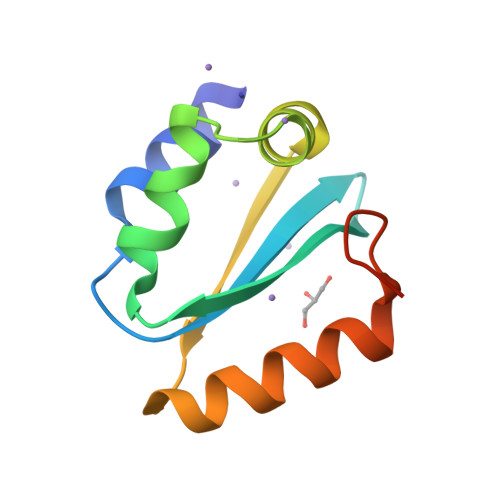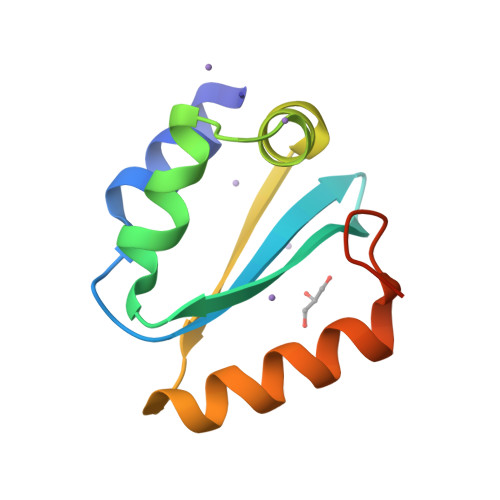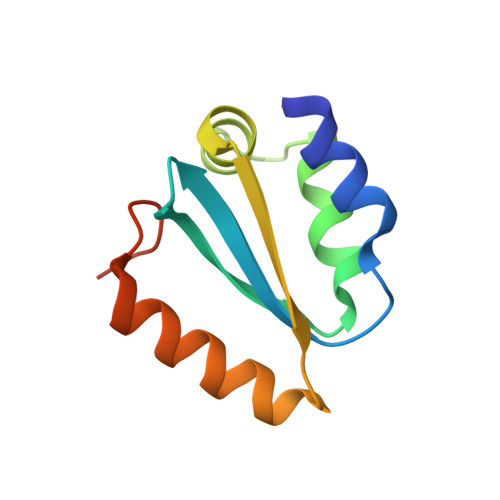Structural insights into the first incision reaction during nucleotide excision repair
Truglio, J.J., Rhau, B., Croteau, D.L., Wang, L., Skorvaga, M., Karakas, E., Dellavecchia, M.J., Wang, H., Van Houten, B., Kisker, C.(2005) EMBO J 24: 885-894
- PubMed: 15692561
- DOI: https://doi.org/10.1038/sj.emboj.7600568
- Primary Citation of Related Structures:
1YCZ, 1YD0, 1YD1, 1YD2, 1YD3, 1YD4, 1YD5, 1YD6 - PubMed Abstract:
Nucleotide excision repair is a highly conserved DNA repair mechanism present in all kingdoms of life. The incision reaction is a critical step for damage removal and is accomplished by the UvrC protein in eubacteria. No structural information is so far available for the 3' incision reaction. Here we report the crystal structure of the N-terminal catalytic domain of UvrC at 1.5 A resolution, which catalyzes the 3' incision reaction and shares homology with the catalytic domain of the GIY-YIG family of intron-encoded homing endonucleases. The structure reveals a patch of highly conserved residues surrounding a catalytic magnesium-water cluster, suggesting that the metal binding site is an essential feature of UvrC and all GIY-YIG endonuclease domains. Structural and biochemical data strongly suggest that the N-terminal endonuclease domain of UvrC utilizes a novel one-metal mechanism to cleave the phosphodiester bond.
Organizational Affiliation:
Department of Pharmacological Sciences, State University of New York at Stony Brook, Stony Brook, NY, USA.


















